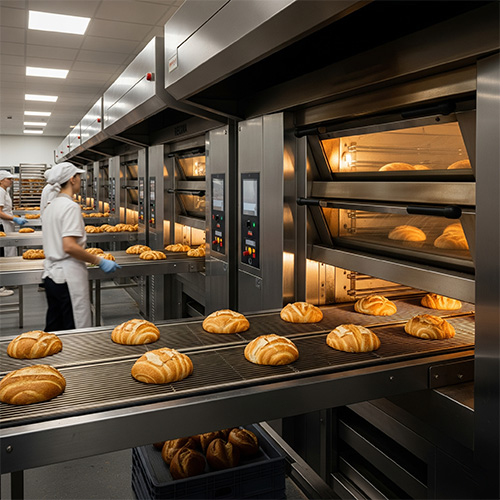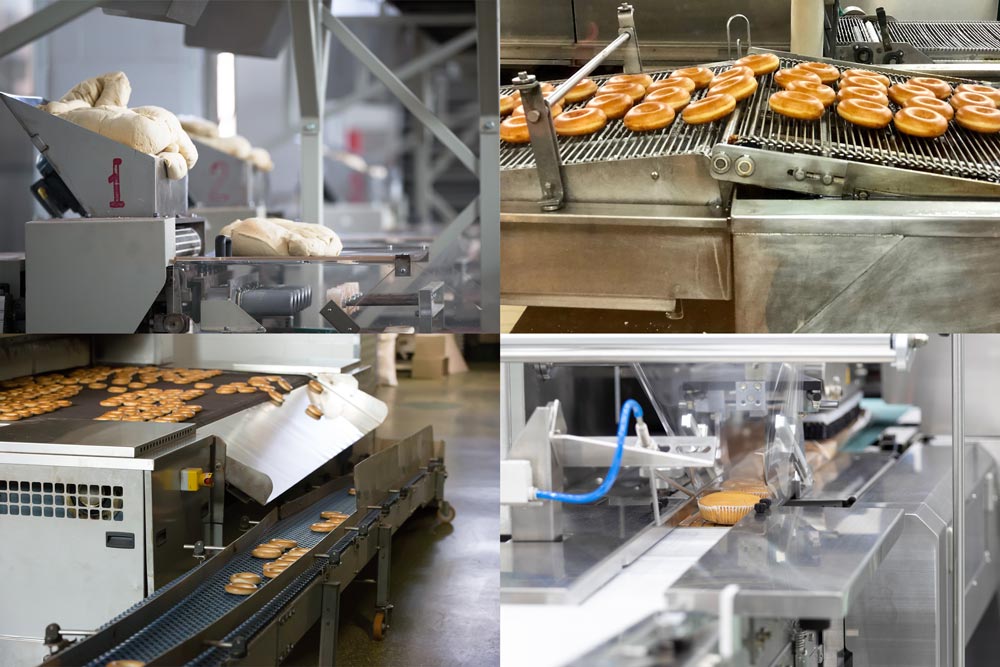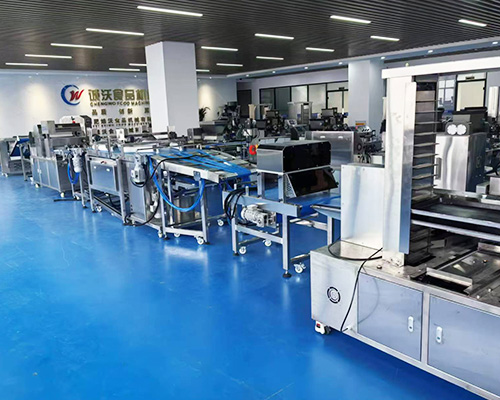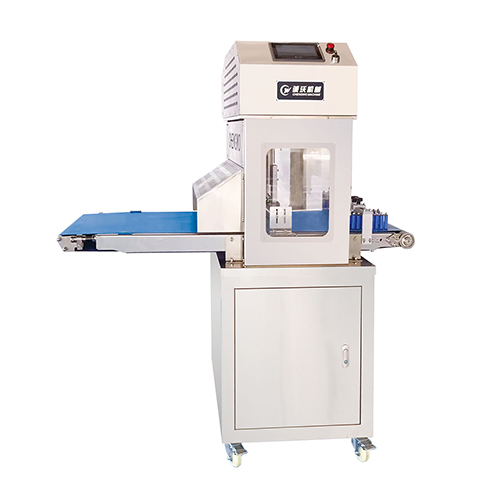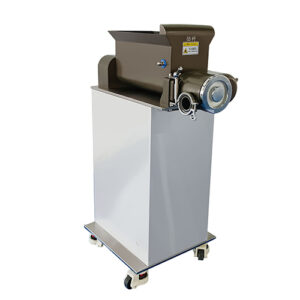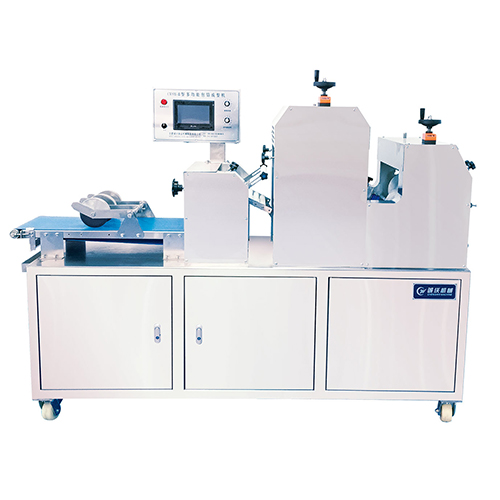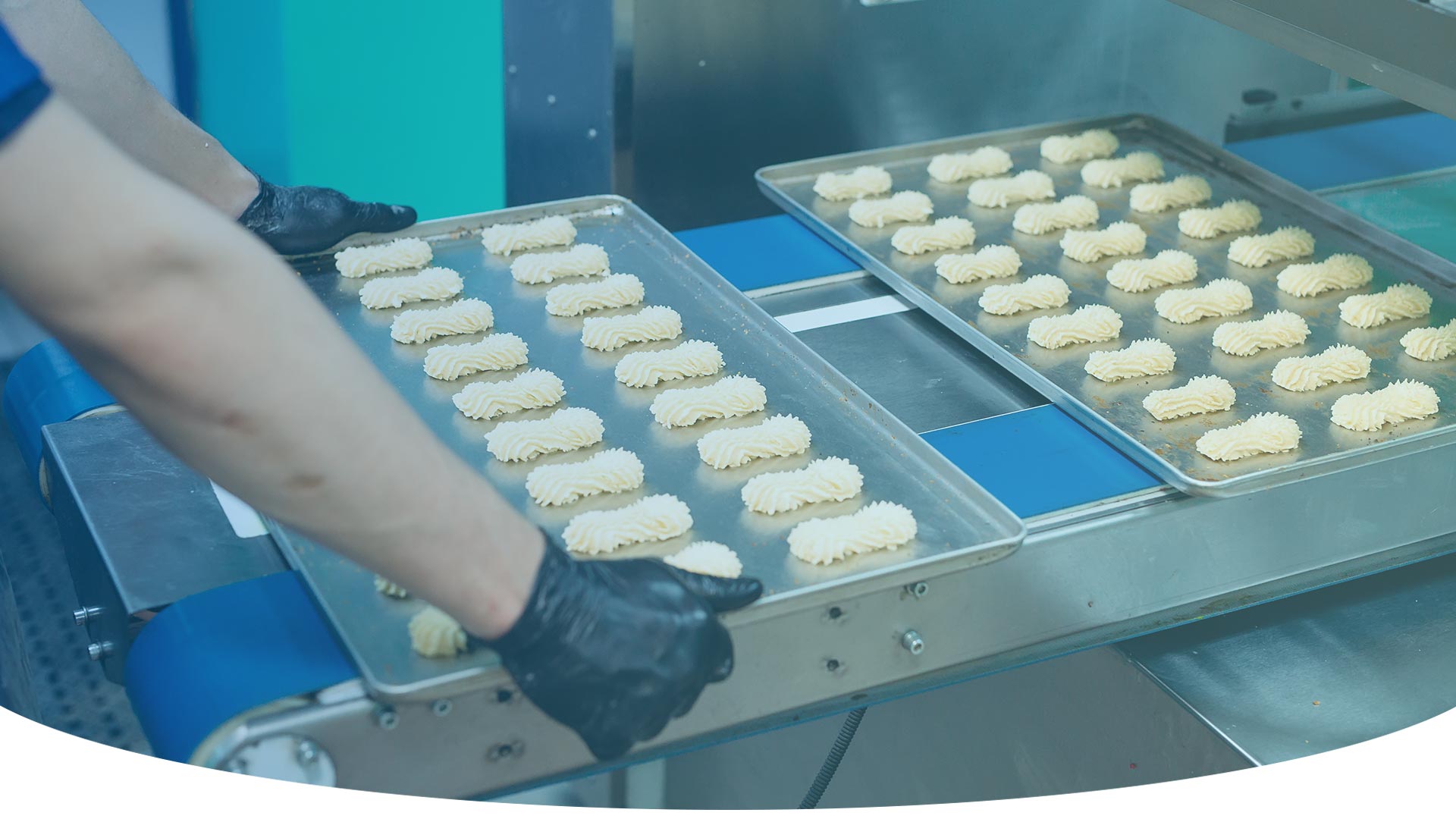


Discover how automated bakery equipment cuts labor costs fast! Boost efficiency, consistency, diversify products. Guide for modern bakeries.
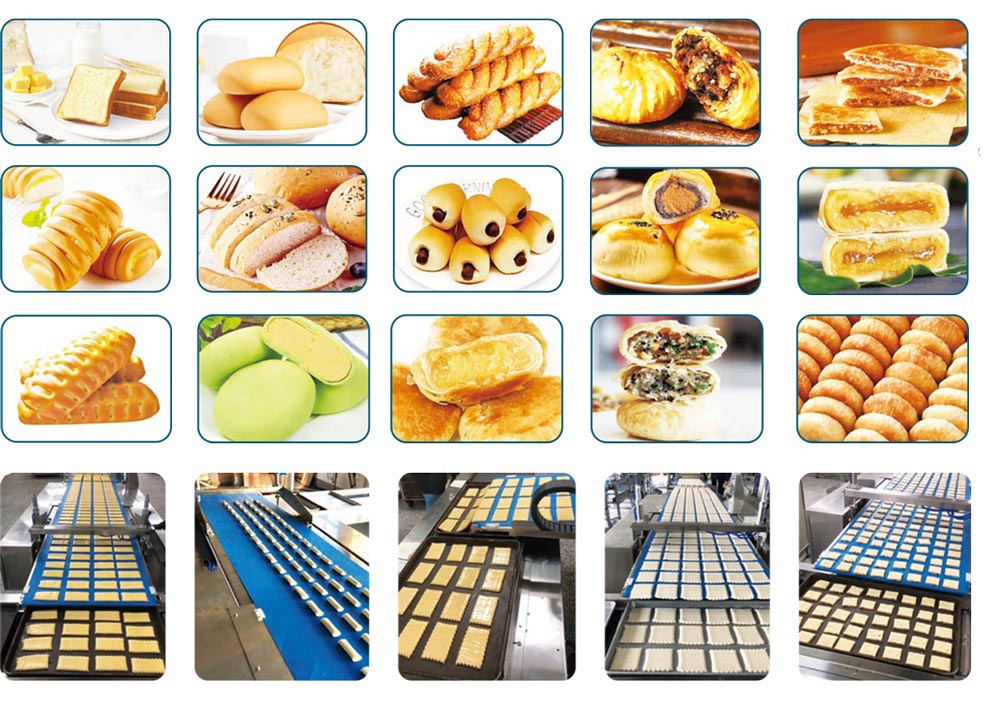
Rising labor costs are a major challenge in the competitive commercial baking industry. Relying on manual processes to complete tasks such as weighing, kneading and forming can result in inconsistent product quality, wasted time and reduced profits. Modern consumers are looking for consistency in taste and variety in products, which makes outdated labor-intensive methods inefficient and limits business growth. Adopting automated baking equipment is a must. It is a transformative investment that can streamline operations, improve product quality and significantly reduce labor costs, redefining efficiency and profitability.
This guide will show you 10 compelling reasons why integrating advanced automated baking equipment is critical for any bakery seeking a competitive advantage and long-term success. We will explore how automation can revolutionize production efficiency, improve product consistency, expand market supply and optimize labor allocation to enhance your profitability. We will also highlight some specific solutions, such as advanced automatic bread production lines, which demonstrate the power of intelligent automation.
As a professional manufacturer of intelligent baking production lines, Chengwo deeply understands how to optimize baking operations to improve cost-effectiveness and product excellence. Our professional engineering R&D center focuses on innovative food processing equipment and comprehensive solutions. Chengwo is recognized as an innovative leader and high-end equipment manufacturer in China’s bakery machinery industry. Our expertise in optimizing bakery solutions, including complete lines and stand-alone equipment like our advanced automatic bread production lines, forms the foundation for the insights we share to help you fully unleash the potential of your bakery business.
Before delving into the solutions, it’s essential to fully grasp the magnitude of the problem: labor costs. For many bakeries, wages, benefits, and associated labor expenses represent the single largest operational expenditure. Understanding the various facets of this challenge underscores the urgent need for transformative solutions like automated bakery equipment.
Across the globe, the cost of labor has been steadily increasing due to various factors, including minimum wage hikes, increased expectations for employee benefits (health insurance, retirement plans), and a generally tighter labor market. These rising costs directly impact a bakery’s profitability, especially in an industry where margins can be tight. Unlike raw material costs which might fluctuate, labor costs tend to move in one direction—upwards. This consistent upward pressure necessitates a re-evaluation of how labor is utilized and where efficiencies can be gained. Investing in automated bakery equipment offers a tangible pathway to mitigate these escalating expenses by reducing reliance on manual processes that require significant human hours.
Beyond the cost, many bakeries face a persistent challenge in finding and retaining skilled bakers and production staff. The art of baking requires specific knowledge and experience, and the pool of adequately trained professionals is often limited. This scarcity drives up wages for skilled positions and can lead to production delays if positions remain unfilled. Furthermore, high turnover rates among less skilled positions necessitate continuous training, which is an additional hidden labor cost. Automated bakery equipment can help bridge this gap by performing repetitive or physically demanding tasks that are difficult to staff, allowing existing skilled employees to focus on higher-value activities like recipe development, quality control, or supervisory roles.
Manual processes, by their very nature, introduce inefficiencies that inflate labor costs. Tasks like hand-scaling ingredients, repetitive kneading, manual forming of thousands of loaves, or constant monitoring of traditional ovens are time-consuming and prone to human error. These inefficiencies manifest as longer production cycles, increased need for overtime, higher rates of product waste due to inconsistencies, and ultimately, higher labor hours per unit of product. The physical demands of manual work also contribute to fatigue, potentially leading to slower output and decreased quality as the workday progresses. Transitioning to automated bakery equipment directly addresses these inefficiencies by performing tasks with precision, consistency, and speed that no human can match over an extended period.
The combined effect of rising wages, labor scarcity, and the inherent inefficiencies of manual processes is a direct squeeze on a bakery’s profit margins. In a competitive market where product pricing might have limited flexibility, the only way to sustain or improve profitability is to reduce operational costs. Labor often represents the largest segment of these costs. By strategically deploying automated bakery equipment, bakeries can achieve significant reductions in labor hours required per batch or per unit of product, thereby improving overall cost efficiency and directly enhancing their profit margins. This financial imperative is a powerful driver for bakery automation.
While labor cost reduction is a primary driver, the impact of automated bakery equipment extends far beyond mere financial savings. It fundamentally transforms product quality by introducing a level of precision and consistency that is virtually impossible to achieve through manual methods alone. This consistency is a cornerstone of customer loyalty and brand reputation.
Human hands, no matter how skilled, are subject to natural variations in strength, speed, and precision. When it comes to tasks like scaling ingredients, kneading dough, or forming loaves, even slight inconsistencies can lead to noticeable differences in the final product. One loaf might be perfectly proofed, while another is under-proofed. One cookie might have an ideal spread, while another is too thick. Automated bakery equipment, however, performs these tasks with exact repeatability. Machines precisely measure ingredients, knead dough to a consistent texture and temperature, and form products with uniform weight, shape, and size. This elimination of human variability ensures that every single product meets the exact specifications, batch after batch, day after day.
The direct consequence of eliminating human variability is the achievement of standardized product quality. Customers expect the same delightful taste, texture, and appearance every time they purchase your products. Inconsistent quality leads to customer dissatisfaction, reduced repeat business, and increased waste due to substandard products. With automated bakery equipment, bakeries can reliably produce batches that are virtually identical, ensuring that the last loaf of the day is as perfect as the first. This unwavering consistency builds immense brand trust and loyalty, reinforcing your bakery’s reputation for excellence. It also significantly reduces product waste from discarded or discounted items that don’t meet quality standards.
Modern automated bakery equipment is often equipped with sophisticated sensors and Programmable Logic Controllers (PLCs) that monitor and control every aspect of the mixing and forming process. Sensors can track dough temperature, humidity, mixing time, and even dough consistency in real-time. PLCs then interpret this data and make precise adjustments to ensure the process stays within predefined parameters. For instance, if a dough is slightly warmer than desired, the mixer’s speed or cooling system might automatically adjust. This continuous, data-driven optimization ensures that environmental factors or slight ingredient variations do not compromise the final product quality, guaranteeing consistent output from your automated bakery equipment.
Consider the simple, yet critical, task of ingredient dosing. In a manual process, a baker might scoop flour or pour liquids, relying on scales and visual estimation. With automated bakery equipment, precise gravimetric (weight-based) or volumetric (volume-based) dosing systems integrate directly with your mixers. These systems can dispense exact quantities of flour, water, sugar, and other ingredients, often to within a fraction of a gram or milliliter. This precision not only ensures adherence to recipes but also optimizes raw material usage, preventing costly waste from over-portioning. The result is a perfectly balanced recipe every time, directly contributing to consistent product quality and taste.
Beyond consistency, a major limitation of manual baking is speed. Human hands can only work so fast for so long. Automated bakery equipment fundamentally removes this bottleneck, enabling bakeries to dramatically increase their production speed and overall throughput. This capability is vital for meeting growing demand, expanding into new markets, and seizing competitive advantages.
Unlike human workers who require breaks, rest, and adhere to shift schedules, automated bakery equipment can operate continuously for extended periods, even 24/7 if necessary. This capability allows bakeries to maximize their production capacity without incurring significant overtime costs or requiring larger teams. For high-volume demands, this non-stop operation means products can be consistently produced around the clock, ensuring fresh supply and timely delivery. This ability to maintain continuous production transforms a bakery’s operational model, moving from batch-by-batch manual efforts to a continuous, high-output stream powered by reliable automated bakery equipment.
Each stage of the baking process, from mixing and dividing to forming and baking, can be significantly accelerated with automation. A dough mixer might complete a batch in half the time of a manual process due to more powerful motors and optimized mixing patterns. Dividers and rounders can process hundreds or even thousands of dough pieces per hour, a rate impossible for human hands. Tunnel ovens bake products continuously on a conveyor belt, eliminating batch loading and unloading times. This cumulative effect of faster individual processes leads to dramatically reduced overall production cycle times. For bakeries with high-volume demands or those looking to scale up rapidly, the speed offered by automated bakery equipment is indispensable.
In a manual production line, certain tasks or stages often become bottlenecks, slowing down the entire process. This might be a slow hand-forming station, an oven that takes too long to recover, or a packaging area that can’t keep up. Automated bakery equipment is designed to work in synergy, creating a smooth, continuous flow that minimizes these bottlenecks. For instance, a high-speed dough divider can feed directly into an equally fast rounder, then seamlessly transition to a proofer and then into an oven, ensuring that no single piece of equipment or manual task holds back the entire line. This optimized flow dramatically increases overall throughput and efficiency across the entire bakery operation.
The direct consequence of increased speed and throughput is a fundamental shift in labor allocation. When machines handle the high-volume, repetitive tasks, human labor is freed up. Instead of having multiple staff members dedicated to mixing, dividing, or forming, you might only need one or two to oversee the automated bakery equipment. This allows you to reassign staff to higher-value roles that require human creativity, judgment, or interaction, such as quality control, product development, customer service, or even managing sales and marketing. The time saved by automation can also reduce the need for overtime, directly cutting labor costs and optimizing your workforce.
One of the most immediate and significant impacts of integrating automated bakery equipment is the ability to strategically reallocate your workforce and drastically reduce costly overtime hours. This doesn’t necessarily mean reducing staff numbers; rather, it means utilizing your human capital more effectively.
When machines take over the physically demanding, repetitive, or high-volume tasks, your skilled bakers and production staff can be moved to roles where their unique human abilities are better utilized. This includes:
Overtime pay can quickly erode profit margins. When production demands increase, or if manual processes are slow, bakeries often resort to paying employees time-and-a-half or double-time. Automated bakery equipment, with its ability to operate continuously at high speeds, significantly reduces or eliminates the need for such costly overtime. A line that can produce the required volume within standard operating hours directly translates into substantial savings on labor expenses, making a compelling case for automation. The consistent output of the automated line reduces the pressure to rush or work extended hours, improving overall workforce well-being.
The integration of automated bakery equipment fundamentally changes the nature of work in a bakery. Instead of hands-on physical labor, staff transition to roles involving monitoring, programming, and maintaining the machinery. This requires a different skill set, often involving technical aptitude and problem-solving. While initial training might be necessary, the long-term benefits include a more skilled workforce, reduced physical strain, and a more predictable operational flow. This strategic shift ensures that human talent is applied where it adds the most value, overseeing complex systems and ensuring their optimal performance rather than performing rote tasks.
Numerous bakeries globally have successfully implemented automation and reaped the benefits of workforce reallocation. For example, a bakery that automated its dough dividing and rounding process found that staff previously assigned to these tasks could now manage the packaging line more efficiently, develop new gluten-free product lines, or take on supervisory roles, leading to overall productivity gains without increasing the total payroll. These real-world examples underscore that the investment in automated bakery equipment is an investment in a more efficient and adaptable workforce, allowing bakeries to grow and innovate without disproportionately increasing labor costs.
In the highly regulated food industry, maintaining stringent food safety and hygiene standards is paramount. An outbreak or recall due to contamination can devastatingly impact a bakery’s reputation, financial stability, and consumer trust. Automated bakery equipment plays a crucial role in mitigating these risks, offering superior control over hygiene compared to manual processes.
One of the most significant advantages of automation from a food safety perspective is the substantial reduction in direct human contact with food products. Every human touch introduces a potential source of contamination, whether microbial (from hands or clothing) or physical (hair, foreign objects like jewelry). Automated bakery equipment, once loaded, can process ingredients through mixing, dividing, forming, and even baking without direct human intervention. This enclosed and controlled environment drastically minimizes the risk of pathogens, allergens, or foreign materials entering the food product, enhancing overall food safety throughout the production line.
Modern automated bakery equipment is meticulously designed with hygiene in mind. Manufacturers prioritize smooth, non-porous surfaces (typically food-grade stainless steel) that resist bacterial harborage. Designs minimize crevices, sharp corners, and hard-to-reach areas where food particles can accumulate and become breeding grounds for microorganisms. Many machines feature ‘Cleaning-in-Place’ (CIP) capabilities, allowing for automated washing and sanitizing without extensive disassembly. For parts that do require ‘Cleaning-out-of-Place’ (COP), they are often designed for quick and easy removal and reassembly. This hygienic design not only simplifies cleaning protocols but also ensures a far more thorough and consistent sanitation process than manual cleaning, directly reducing contamination risks.
Investing in new automated bakery equipment ensures your operations can more easily comply with stringent industry safety standards and regulations, such as those mandated by HACCP (Hazard Analysis and Critical Control Points), FDA (Food and Drug Administration), NSF (National Sanitation Foundation), and various international food safety bodies. Reputable manufacturers design their equipment to meet or exceed these benchmarks, often carrying certifications that attest to their hygienic qualities and safe operation. This compliance is critical for passing audits, maintaining necessary licenses, and, most importantly, for safeguarding public health. Automation helps bakeries maintain a consistent level of compliance, reducing the risk of costly fines or operational shutdowns.
The combined benefits of reduced human contact, superior hygienic design, and precise process control directly contribute to a lower risk of product recalls. Recalls are not only incredibly expensive due to product retrieval, disposal, and potential legal fees, but they also severely damage a brand’s reputation and consumer trust, which can take years to rebuild. By minimizing human error and potential contamination points, automated bakery equipment provides a more controlled and predictable production environment. This reduces the likelihood of contaminated or substandard products reaching consumers, thereby acting as a powerful preventative measure against costly and damaging recalls.
One of the less obvious, yet incredibly valuable, benefits of investing in automated bakery equipment is the newfound ability to produce a wider variety of specialized or complex products that would be difficult, inconsistent, or even impossible to achieve with manual methods. This capability enables bakeries to diversify their product portfolio, tap into new market segments, and cater to evolving consumer tastes.
Many artisan or specialty baked goods feature intricate shapes, delicate structures, or precise fillings that are time-consuming and challenging to create manually with consistency. Automated bakery equipment such as specialized formers, extruders, and precise filling machines can flawlessly execute these complex designs at high speeds. Imagine perfectly coiling cinnamon rolls, precisely injecting cream into delicate pastries, or forming uniquely shaped artisanal breads. Automation ensures each piece is identical, maintaining aesthetic appeal and product integrity, which is crucial for premium products. This capability allows bakeries to innovate and offer items that stand out in a crowded market.
Some doughs are notoriously difficult to work with by hand due to their stickiness, softness, or sensitivity to temperature. For example, high-hydration doughs for artisan breads or delicate laminated doughs for croissants require specific handling to achieve their desired texture and structure. Manual processing can easily damage these doughs, leading to inconsistent or inferior products. Automated bakery equipment, however, is engineered with gentle handling mechanisms, precise temperature control during mixing, and specialized forming tools that can perfectly manage these challenging doughs, ensuring optimal development and consistent results. This opens up new product categories for bakeries previously limited by their ability to manually process such specialized doughs.
The versatility afforded by automated bakery equipment directly translates into the ability to significantly expand your product portfolio. With the right machinery, you’re no longer limited to the basic breads and pastries that your manual labor force can efficiently produce. You can venture into a vast array of specialty products that cater to diverse tastes and dietary preferences. For instance, a sophisticated bread production line can be configured to produce a wide range of items with precision and speed, including:
This ability to consistently produce such a diverse array of items from a single automated bakery equipment line allows bakeries to capture more market share, appeal to a broader customer base, and respond quickly to emerging food trends.
As consumer preferences become more varied, there’s a growing demand for niche products—gluten-free, vegan, high-protein, or ethnic specialties. Often, these products require specific processing conditions or delicate handling. Automated bakery equipment can be designed or adapted to meet these precise requirements, ensuring consistent quality even for smaller, specialized runs. This allows bakeries to enter lucrative niche markets that might be too labor-intensive or technically challenging to address with traditional manual methods, further diversifying revenue streams and strengthening market position.
To illustrate the transformative power of automated bakery equipment, let’s delve into a specific example: the Automatic Bread Production Line. This integrated system, offered by industry leaders like Chengwo, exemplifies how multiple pieces of automated machinery work in synergy to revolutionize bread production, dramatically cutting labor costs while ensuring superior quality and versatility. Chengwo offers both complete Automatic Bread Production Lines and individual high-performance components, allowing bakeries to choose the solution that best fits their needs.
The Automatic Bread Production Line is a comprehensive solution designed to automate the entire bread-making process, from dough preparation to final product. This advanced automated bakery equipment line is incredibly versatile, capable of producing a wide array of bread products that would otherwise require extensive manual labor and specialized skills. Imagine effortlessly producing diverse items such as silver thread rolls, honeycomb buns, caterpillar buns, milk buns, classic French rolls, various forms of toast bread, traditional European bread, small round buns, various filled burgers, standard hamburger buns, delightful egg custard cakes, and even unique items like yogurt pretzels (twisted donuts). This single integrated line dramatically reduces the need for constant human intervention, ensuring consistent quality across all these varied products.
The initial stage often involves precise dough handling. A key component within an integrated line, or available as a standalone piece of automated bakery equipment, is the Food Cut Table. This specialized machine is designed for the precise cutting, portioning, and trimming of various food products. While commonly used for meat, fish, poultry, and vegetables, its application in bread production involves portioning dough accurately and efficiently. Equipped with high-precision blades and an ergonomic design, it enhances efficiency by ensuring uniform cutting and minimizing food waste. This machine replaces manual portioning, which is prone to inconsistency and can be physically demanding, thereby standardizing dough piece weight and size, critical for consistent final product quality and yield.
For bread products that require fillings, the Pick Type Filling Machine is an indispensable piece of automated bakery equipment. This machine automates the precise dispensing of various fillings—be it sweet creams, savory mixtures, or fruit purees—into dough pieces. Manual filling is not only slow and labor-intensive but also often inconsistent in quantity and placement. The automated filler ensures uniform distribution, preventing over-filling or under-filling, which can impact product quality, taste, and even baking performance. This precision reduces ingredient waste and ensures a consistent consumer experience, greatly expanding the range of filled bakery items a facility can produce with high efficiency.
Following forming or filling, dough pieces often require gentle transfer or minor adjustments before proofing or baking. The Rolling Platform is an essential piece of automated bakery equipment designed to provide a stable and movable work surface for various production tasks, such as packaging, sorting, or assembling. Constructed with a robust frame, anti-slip surface, and high-quality casters, it facilitates easy movement and positioning within the food factory. Made from food-grade stainless steel, it meets stringent hygiene standards and is easy to clean, making it ideal for environments with strict sanitary requirements. While not an active processing unit, its design contributes to maintaining a continuous, hygienic workflow, minimizing manual handling and potential contamination during critical post-forming stages.
At the heart of the bread production line’s shaping capabilities is the Bread Forming Machine. This piece of automated bakery equipment is dedicated to taking divided and, if applicable, filled dough pieces and transforming them into their final desired shapes before proofing and baking. Whether it’s rounding dough for buns, molding loaves for toast bread, or creating specific shapes for artisan rolls, this machine performs these tasks with remarkable speed and consistency. It eliminates the labor-intensive and highly skilled manual shaping process, ensuring every bread item has a uniform appearance and structure, which is vital for consistent baking results and consumer appeal.
The Bread Host is a professional piece of automated bakery equipment specifically designed to integrate and automate multiple core bread production steps. It goes beyond just mixing, capable of automating processes like kneading, bulk fermentation, proofing, final shaping, and even baking. This machine significantly boosts production efficiency and ensures product consistency by precisely controlling each stage. It’s equipped with advanced temperature and humidity control technology, which is crucial for optimal dough development and achieving superior bread quality. The Bread Host is an ideal solution for industrialized bread production, large chain bakeries, and major food processing plants, enabling businesses to optimize production, substantially lower labor costs, and enhance their market competitiveness through comprehensive automation.
While Chengwo offers both the complete Automatic Bread Production Line and individual components, the true power lies in the synergistic operation of an integrated line. When each piece of automated bakery equipment is designed to work seamlessly with the next, bottlenecks are eliminated, workflow is optimized, and continuous production is achieved with minimal human intervention. This integration maximizes throughput, ensures consistent quality from start to finish, and delivers the most significant labor cost savings. For bakeries that are not ready for a full line, individual units offer a modular path to automation, allowing gradual upgrades to critical areas that currently consume the most labor.
Waste in a bakery can manifest in many forms: inconsistent product batches that are unsaleable, over-portioning of expensive ingredients, spoilage due to inefficient processing, or even ingredients lost during manual handling. Automated bakery equipment significantly addresses these issues, leading to substantial reductions in waste and an improvement in overall yield, directly impacting profitability.
Human error is a significant contributor to waste in manual bakery operations. This can include incorrect ingredient measurements, improper mixing times, or mistakes during forming that lead to substandard products. Furthermore, manual processes are often slower, increasing the exposure time of sensitive ingredients to ambient conditions, potentially leading to spoilage. Automated bakery equipment, with its precision control and rapid processing speeds, drastically minimizes these errors. Precise dosing systems prevent incorrect formulations, automated mixers ensure optimal dough development, and controlled environments reduce exposure to contaminants, all contributing to fewer spoiled batches and a higher proportion of saleable products.
One of the most immediate ways automated bakery equipment reduces waste is through precise portioning and handling of raw materials. Manual dividing of dough, for instance, often results in slight variations in weight, leading to either underweight products (which might be rejected or under-deliver value) or overweight products (which waste expensive ingredients). Automated dough dividers, precise filling machines, and ingredient dosing systems ensure that every gram of flour, every milliliter of water, and every drop of filling is used exactly as specified in the recipe. This optimization prevents costly over-portioning and ensures consistent yield from every batch of raw materials, directly impacting the bottom line.
Inconsistent baking results are a major source of waste. Products that are burnt, undercooked, misshapen, or unevenly colored due to variations in proofing or oven conditions often end up as discards or are sold at a reduced price. Automated bakery equipment, especially advanced ovens and proofers with precise temperature and humidity controls, ensures consistent baking conditions for every batch. This leads to uniform browning, perfect texture, and ideal rise across all products, significantly reducing the number of rejected items. Fewer rejected products mean higher effective yields from your raw materials and labor, maximizing your return on investment.
The cumulative effect of minimized spoilage, optimal raw material usage, and consistent baking results translates into significant long-term savings from reduced waste. These savings are not always immediately apparent but compound over time. Reducing waste not only saves on ingredient costs but also on the labor associated with reprocessing or discarding faulty products, and even the energy consumed to bake them. For high-volume bakeries, even a small percentage reduction in waste can amount to hundreds of thousands of dollars annually, making the investment in automated bakery equipment a financially astute decision for sustained efficiency.
In the modern manufacturing landscape, data is king. The ability to collect, analyze, and act upon production data is crucial for continuous improvement, quality control, and regulatory compliance. Automated bakery equipment inherently generates a wealth of data, transforming operational oversight from guesswork to precise analytics.
Advanced automated bakery equipment systems come equipped with sophisticated sensors and control interfaces that allow for real-time monitoring of every stage of the production process. Operators and managers can see live data on dough temperature, mixing speeds, oven temperatures, proofing times, throughput rates, and more. This real-time visibility enables immediate detection of any deviations from optimal parameters, allowing for quick corrective actions. This contrasts sharply with manual operations where problems might go unnoticed for extended periods, leading to entire batches being compromised. Real-time monitoring provides unprecedented control over your production environment.
Beyond real-time monitoring, automated bakery equipment often logs historical data, which can then be used for in-depth performance analytics. This data can reveal patterns, bottlenecks, and areas for optimization that would be impossible to identify through manual observation. For example, you might analyze energy consumption per product type, pinpoint specific times of day when production efficiency drops, or correlate certain machine settings with product consistency issues. These insights allow bakeries to fine-tune their processes, identify opportunities for further efficiency gains, and continuously improve product quality. This data-driven approach fosters a culture of continuous improvement in your bakery.
In the event of a food safety incident or product recall, rapid and accurate traceability is absolutely critical. Automated bakery equipment can integrate with batch management and inventory systems, providing comprehensive data on every ingredient that goes into a product and every condition it undergoes during processing. This means you can quickly trace a finished product back to its raw material suppliers, specific production dates, mixing parameters, and even the operators involved. This end-to-end traceability minimizes the scope of potential recalls, protects public health, and significantly reduces the financial and reputational damage associated with such events. It transforms your automated bakery equipment into a vital component of your robust supply chain management system.
The detailed data logging and consistent process control provided by automated bakery equipment are invaluable for regulatory compliance and audit readiness. Food safety regulations often require meticulous record-keeping of processing parameters, cleaning schedules, and quality checks. Automated systems can generate these reports automatically, ensuring that all necessary documentation is readily available for audits. This not only saves time and reduces administrative burden but also demonstrates a high level of control and adherence to regulatory requirements, boosting confidence among regulators and customers alike. An automated bakery is an audit-ready bakery.
The decision to invest in automated bakery equipment is not just about addressing current challenges; it’s about strategically positioning your bakery for long-term resilience, growth, and adaptability in a rapidly changing market. It’s about building a future-proof operation.
One of the most compelling reasons to invest in automated bakery equipment is its inherent scalability. As your bakery grows, demand for your products will increase. Manual operations can quickly hit a ceiling, requiring costly physical expansions, additional shifts, or a disproportionate increase in labor. Automated lines, however, are designed to handle higher volumes with greater ease. Often, a single shift with automated equipment can match or exceed the output of multiple shifts with manual labor. Furthermore, modular automated systems allow for incremental expansion, meaning you can add more capacity or new functions as your business evolves, ensuring your bakery can scale seamlessly with future demand without constant, disruptive overhauls.
The food industry is constantly evolving, with new product trends, dietary preferences, and ingredient innovations emerging regularly. Automated bakery equipment, particularly programmable and versatile systems, offers greater flexibility to adapt to these changes. It’s easier and faster to reconfigure an automated line or reprogram a machine for a new product run than to retrain an entire manual workforce or re-engineer a manual process. This agility allows bakeries to quickly respond to new market demands, capitalize on emerging trends, and remain competitive by offering innovative products without significant operational hurdles. It transforms your bakery from reactive to proactive.
In an industry facing a growing skilled labor shortage, attracting and retaining talented bakers is paramount. A modern bakery equipped with state-of-the-art automated bakery equipment presents a far more appealing workplace than one reliant on outdated, physically demanding manual processes. Young talent, in particular, is often drawn to technologically advanced environments that offer opportunities to learn new skills (e.g., operating PLCs, troubleshooting machinery). Automation reduces physical strain, creates a safer environment, and shifts roles towards more intellectually stimulating tasks, all of which contribute to higher job satisfaction and lower employee turnover. This makes your bakery an employer of choice.
Ultimately, investing in automated bakery equipment is about sustaining a competitive advantage in a fierce market. Bakeries that embrace automation can produce higher quality products more consistently, at lower cost, and with greater speed and flexibility than their competitors relying on manual labor. This allows for more competitive pricing, faster time-to-market for new products, and the ability to fulfill larger orders. This strategic foresight enables bakeries to outpace competitors, build stronger brand loyalty, and secure a dominant position in the market for years to come. It transforms your bakery into a modern, efficient powerhouse.
Deciding to integrate automated bakery equipment is a significant strategic move. It’s crucial to evaluate various factors to ensure the investment aligns perfectly with your bakery’s unique needs, operational goals, and long-term vision. This table outlines essential considerations to guide your decision-making process.
| Consideration Category | Key Questions & Points to Evaluate | Impact on Investment Decision |
| Current Production Needs | What are your current production volumes? What are your most labor-intensive tasks? What are your biggest bottlenecks? | Identifies specific areas where automation will yield the greatest immediate impact and labor cost savings. Pinpoints specific automated bakery equipment solutions. |
| Future Growth & Scalability | What are your projected growth targets (volume, new products) in 3, 5, 10 years? How will the equipment accommodate this growth? | Ensures the chosen automated bakery equipment can scale with your business, preventing rapid obsolescence and supporting future expansion. |
| Product Range & Versatility | What types of products do you currently make? Do you plan to diversify? How adaptable is the equipment to different doughs, sizes, fillings? | Determines the necessary flexibility of the automated bakery equipment to support your current offerings and enable future product innovation and market penetration. |
| Staff Skills & Training | What new skills will your staff need? What training resources does the manufacturer provide? How will existing staff be reallocated? | Ensures successful adoption of the automated bakery equipment; minimizes resistance to change and maximizes efficiency of the human workforce. |
| Maintenance & Support | What is the warranty? What preventive maintenance is required? Is local technical support and spare parts availability guaranteed? | Critical for minimizing downtime and ensuring the long-term reliability and performance of your automated bakery equipment. |
Transitioning to automated bakery equipment is a strategic imperative, and as mentioned above, automation has many benefits: significantly reducing labor costs, ensuring product consistency, increasing production capacity, enhancing food safety, and promoting innovation. Solutions like complete automated bread production lines can help bakeries overcome challenges and take performance and profitability to new heights.
By proactively responding to rising labor costs and quality requirements, bakeries that invest in smart automation not only optimize their business, but also ensure the future development of their business. This ensures agility, scalability, and sustained competitive advantage to build a more resilient, profitable, and successful future.
Chengwo is committed to providing bakeries with advanced smart bakery production line technology. We are committed to innovation and provide high-end manufacturing solutions designed to achieve optimal performance, efficiency, and critical labor cost reduction. We offer a complete range of automated bakery equipment, such as versatile automated bread production lines, as well as individual high-performance machines. To learn how our well-designed solutions can improve your bakery’s efficiency, reduce labor costs, and provide a competitive advantage, please contact us for a customized consultation.
How quickly can a bakery see a return on investment (ROI) from automated bakery equipment?
The ROI period varies depending on the initial investment size, the specific type of automated bakery equipment installed, and current labor costs. However, many bakeries report seeing a significant return within 2-5 years due to substantial savings in labor, reduced waste, increased throughput, and improved product consistency, which boosts sales.
Does implementing automated bakery equipment mean laying off staff?
Not necessarily. While automation reduces the need for manual labor in repetitive tasks, it often allows bakeries to reallocate staff to higher-value roles such as quality control, product development, machine operation and maintenance, or customer service. It can also help manage growth without needing to hire additional staff, especially during peak seasons or expansion.
Can automated bakery equipment handle various types of doughs and products?
Modern automated bakery equipment is highly versatile. Advanced machines and integrated lines, like an Automatic Bread Production Line, are designed to handle a wide range of dough consistencies and product types, from delicate pastry doughs to high-hydration artisan bread doughs. Many systems also allow for quick changeovers between different product shapes and sizes.
How does automated bakery equipment improve food safety?
Automated bakery equipment enhances food safety by significantly reducing direct human contact with food, minimizing contamination risks. It also features hygienic designs with smooth, easy-to-clean surfaces, and can incorporate advanced sensors for precise temperature and humidity control, all contributing to a safer and more consistent product.
What kind of maintenance is required for automated bakery equipment?
Automated bakery equipment requires regular preventative maintenance (PM) to ensure optimal performance and longevity. This includes routine cleaning, lubrication with food-grade lubricants, inspection of wear parts, and calibration of sensors. Many modern machines offer remote diagnostics and predictive maintenance alerts to help schedule servicing proactively.
